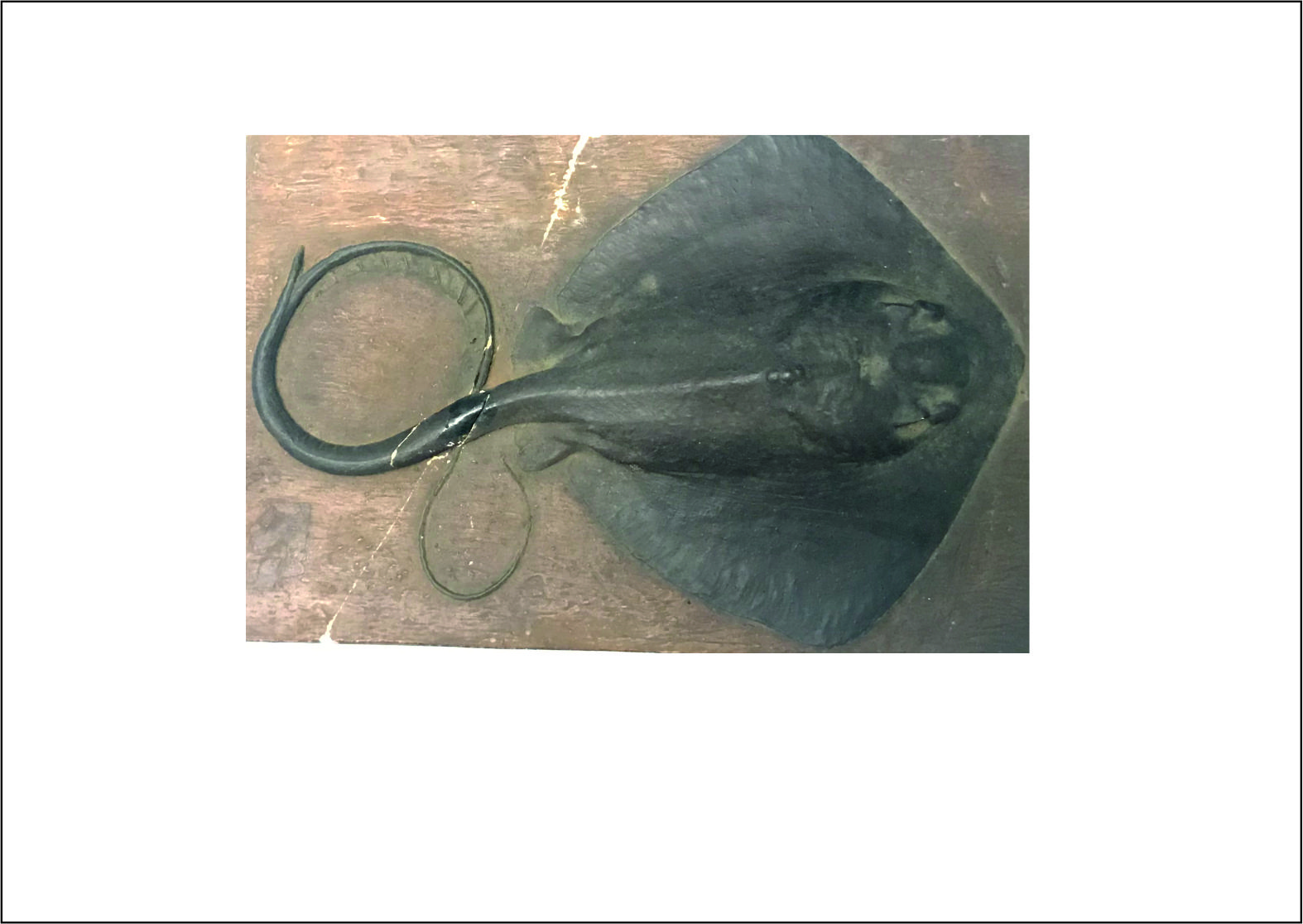
Cowtail stingray
Pastinachus sephen
| Class: | Chondrichthyes |
| Order: | Myliobatiformes |
| Family: | Dasyatidae |

Distribution and habitat
 It has a widespread distribution in the tropical waters of the Indo-Pacific, from South Africa and the Red Seato Japan and Australia, including Melanesia and Micronesia.
It has a widespread distribution in the tropical waters of the Indo-Pacific, from South Africa and the Red Seato Japan and Australia, including Melanesia and Micronesia.- They are amphidromous and known to enter estuaries and rivers.
- They are usually found on sandy bottoms in coastal waters and on coral reefs to a depth of 60 meters.
About the fish
- A large, plain, dark stingray with an angular snout and pectoral disc.
- The most distinctive characteristic of the cowtail stingray is the large, flag-like ventral fold on its tail, which is prominent when it is swimming.
- The coloration is a uniform grayish brown to black above and mostly white below. The tail fold and tip are black.
- This species may reach 3 meters long and 1.8 meters across, and 250 kg in weight.
- The pectoral fin disk is very thick, with almost straight anterior margins and rounded apices.
- Theeyes are very small and widely spaced.
- Themouth is narrow, with 20 rows of distinctive hexagonal, high-crowned teeth in each jaw and five papillae on the mouth floor.
- Thetail has a single venomous spine located well backwards of the pelvic fins.
- The disk surface is covered by a broad band of fine dermal denticlesextending from near the tip of the snout to the upper surface of the tail, excluding the extreme margins of the disk.
- They are solitary foragers that feed on bony fishes,crustaceans, polychaete worms, sipunculids, and molluscs.
- These rays are preyed upon by various species of hammerhead and requiem sharks, as well as by the bottlenose dolphin. When threatened, they consistently flee at a 45° angle away from the predator, a trajectory that allows them to maximize the distance covered while still keeping the predator within their field of vision.
- Like other stingrays, reproduction in this species is ovoviviparous, with the embryos sustained in late development by histotroph (“uterine milk”) delivered via specialized structures.
- The females giving birth to live young measuring 18 cm across or more.
- IUCN has listed the species as Near Threatened.
- This species is targeted by commercial fisheries as a source of high-quality shagreen, a type of leather, and its populations are now under threat from heavy exploitation.
